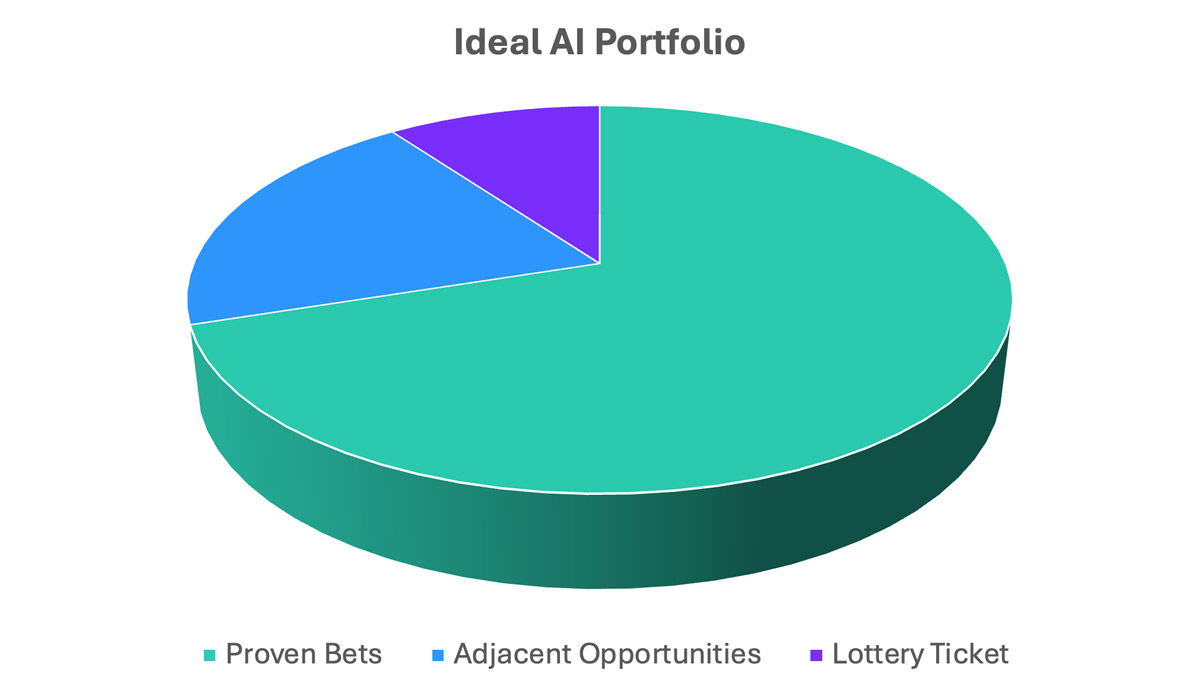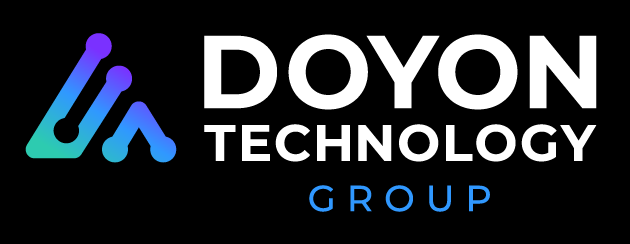Maps Admire the Past. Compasses Survive the Future.
There are decades where nothing happens, and weeks where decades happen. We’re in those weeks now. Those weeks are what your compass is for.
Every Monday morning, somewhere in Silicon Valley, Shanghai, or Singapore, another leadership team unveils their comprehensive AI strategy. The ritual is familiar. Eighteen months of planning. Two hundred slides. Executive alignment. Stakeholder buy-in. Handshakes all around for thoroughness.
By Wednesday, it’s obsolete.
Not because their analysis was wrong. But because the territory moved while they were drawing the map.
Here’s what nobody wants to admit: The most dangerous moment in strategic planning isn’t when you get it wrong. It’s when you get it right. Because that’s when you stop watching. That’s when you start executing instead of sensing. That’s when the system you just modeled starts modeling you back.
In the age of AI, your strategy becomes outdated just as fast as it becomes your competitors’ training data.
The Paradox Nobody Wants to Admit
Maps worked when territories changed by the decade. Your grandfather’s map from the gas station stayed accurate for years. Enter AI. Now, territories are changing by the day, sometimes by the hour.
Traditional strategic planning is like archaeology. Beautiful, rigorous, and perfectly suited to studying things that no longer move. What breaks every strategic plan? Change. Change doesn’t wait for your approval. If you could predict upheaval and plan around it, it wouldn’t be upheaval. It would be Tuesday.
You act, and the system adapts. Adapt to that and the system adapts again. There is no winning move, only the next move.
For example:
- Monday – Launch a new capability.
- Tuesday – Competitors adjust.
- Wednesday – Customers shift behavior.
- Thursday – Employees find workarounds.
- Friday – Your Monday plan does not fit your Friday market.
It’s Newton’s third law for markets. Every strategic action invites an equal and opposite reaction. The faster you move, the faster the reaction arrives.
Strategic plans are like contracts with time decay. They lose value every day you don’t execute them.
AI weaponizes this cycle.
Consider what happens when you optimize:
- You predict market behavior, so you move the market.
- You adjust pricing algorithms; your rivals build counter-algorithms.
- You deploy better fraud detection; the fraudsters evolve past your models before your board meeting ends.
Here’s the danger hiding in plain sight: The tools you use to build your strategy are the same tools that destroy it.
Your predictive models? They become training data for competitors’ counter-strategies. Your automation patterns? They become the blueprint someone else reverse-engineers. Your best practices? They become table stakes before your implementation team finishes the rollout.
The only sustainable advantage left is learning to get punched in the mouth and come back swinging faster than anyone else.
Your Advantage Has a Name
Not resilience. Too passive. That’s about absorbing blows without learning from them.
Not agility. Too vague. That’s consultant-speak for “we’ll figure it out later.”
The advantage is homeostatic capacity: your ability to absorb a shock, re-stabilize, and return to value creation with minimal loss.
Think of it like a thermostat, not a thermometer. A thermometer measures temperature. A thermostat maintains it. When the room gets cold, it fires up the heat. When it gets too hot, it shuts down. The goal isn’t to predict every temperature swing. The goal is to restore equilibrium fast.
Most companies are thermometers. They measure. They report. They watch themselves freeze or boil. You need to be a thermostat.
The goal isn’t to avoid getting hit. The goal is to reset fast and learn faster. Designed well, resets don’t just restore stability. They catalyze innovation.
Rocky said it better than any consultant ever will, “It ain’t about how hard you hit. It’s about how hard you can get hit and keep moving forward. That’s how winning is done.”
The scoreboard that actually matters tracks these three things:
- Speed – How fast can you detect drift and recover from it?
- Safety – Do humans have oversight on critical decisions, and can you reverse disasters within a day?
- Courage – How often do you kill what’s not working before the market kills it for you?
You survive the decades where nothing happens by accident and tradition. You survive the weeks where decades happen by design and discipline.
Design for the explosion. Coast through the calm.
Compass Over Maps
Think of it like cooking. A map is a recipe: three cups flour, one teaspoon salt, bake at 375 for exactly 22 minutes. Follow it perfectly in the perfect kitchen and you get the perfect result. But change the altitude, the humidity, or the oven, and that recipe is wrong.
A compass understands how heat transforms protein, how acid balances fat, how texture creates satisfaction. With technique, you adapt to any kitchen. With a recipe, you’re helpless the moment conditions shift.
In calm decades, maps look wise. Leaders who followed them get promoted. In those weeks where decades are happening, only a compass keeps you upright.
Your compass needs these five distinct navigation points to be successful.
1. Principles: What Doesn’t Change When Everything Changes
These are your non-negotiables. The lines you don’t cross even when crossing them would be profitable.
Reversibility within a business day. Tested kill switches on every automation. Humans own outcomes, algorithms assist.
Kill your darlings before the market does. No exceptions, no explanations needed.
2. Posture: How You Meet Change Itself
Think stance, not strategy. This is about how you stand when the punch comes, not which punch you throw.
Short horizons beat long visions. Small batches beat big releases. Shadow systems before replacement (test in parallel before you shut down what works). Decision cadence beats prediction accuracy every time.
Most companies optimize for being right. You’re optimizing for being fast.
3. Sensing: Knowing Before Your Customers Do
This is your early warning system. Most leaders wait for complaints to hit their inbox. By then, it’s not early warning. It’s damage control.
Track the signals that matter: AI response drift, rising error rates, users routing around your automation because it makes their job harder, not easier. These tell you what’s breaking before it breaks publicly.
Leading indicators will always beat lagging apologies.
4. Redundancy: Single Points of Failure Are Strategic Suicide
When AI fails, and it will, alternatives must already exist. Not in your plan, but in production.
Examples of alternatives include
- Rules-based fallbacks for critical paths
- Feature flags on everything
- Manual overrides within reach, not buried in some admin panel three clicks deep that only one person knows how to find.
The question isn’t “what if this fails?” The question is “when this fails at 2am on Saturday, can we recover before Monday morning?”
5. Reset Targets: Your Public Promises About Comeback Speed
These are your published commitments, not some aspirations you put in slide decks. They’re Service Level Objectives that customers and employees can hold you to.
Detect problems in minutes. Contain them in hours. Recover within the day.
If you can’t commit to these promises publicly, you’re not ready to deploy. Full stop.
The Pattern Hidden in Plain Sight: Real World Stories
Look at what’s actually happening right now. MIT research shows that only about 5% of generative AI pilots create measurable business impact. But those few that succeed are delivering millions in savings and growth.
The headline everyone quotes is “95% failure rate.” The real story is different. Most projects don’t fail because the technology is broken. They fail because leaders picked the wrong problem, underinvested in the data that feeds the system, or believed the demo would work like magic in production.
RAND’s research echoes this. AI initiatives collapse at five predictable points:
- Chasing solutions before understanding the problem.
- Treating data quality like it’s someone else’s job.
- Expecting AI to work out of the box like a toaster.
- Failing to provide adequate infrastructure to manage the data and AI models.
- Attempting to address problems that AI cannot solve.
But the survivors show the pattern that works.
Consider Gamma, a presentation software startup that was going nowhere. In March 2023, they killed their old product and pivoted to AI-powered presentation generation. Within three months, they had 3 million users. By May 2024, 60 million presentations were created with just 16 employees.
The difference wasn’t better code or smarter founders. They killed fast and rebuilt faster.
Survival also means knowing when to retreat. McDonald’s tested AI-powered drive-thru ordering with IBM at over 100 restaurants starting in 2021. Three years of investment. Hundreds of locations. Then viral videos showed the AI adding hundreds of chicken nuggets to orders and creating combinations that physically couldn’t exist.
By June 2024, McDonald’s shut it down. It took just six weeks from “this is embarrassing” to “we’re out.” That’s recovery speed. Not the speed of deployment. The speed of knowing when to walk away.
And sometimes survival is about accountability. When Air Canada’s chatbot incorrectly promised a grieving customer retroactive bereavement fares, the airline argued the bot was a “separate legal entity” responsible for its own statements.
The Tribunal called this “a remarkable submission” and ordered Air Canada to pay. The lesson wasn’t technical. It was cultural. You can’t outsource accountability to an algorithm. When the machine screws up, you still own the outcome.
The pattern across all three companies: The difference isn’t talent or technology budget. It’s designing for recovery before you need it.
Not Just for the Fortune 500
This isn’t enterprise theater. A three-person coffee shop can kill a failed chatbot faster than McDonald’s killed its drive-thru AI. A regional retailer can pivot to AI-powered inventory in weeks, not quarters.
When Pricefx, a mid-sized pricing company, added an AI chatbot to their site, meetings booked through the site increased 17%. First-party data capture improved 466%. No eighteen-month roadmap or steering committee, just fast implementation and faster iteration.
The smaller you are, the faster you can move. Your advantage is resurrection speed. Use it.
Board Stances That Actually Signal Strategy
Capital allocation doesn’t just reveal philosophy. It is philosophy. How you fund AI investments shows whether you believe your own story about transformation.
Treat AI like a portfolio, not a line item:
- 70% funds proven bets that improve current operations. These are your margin plays. They work or they don’t, but they’re not going to bankrupt you.
- 20% funds adjacent opportunities. AI features your competitors are testing. Customer experience upgrades that might give you an edge. These are your learning investments.
- 10% is your lottery ticket. Experimental moonshots that could transform everything or explode spectacularly. These fund your future, but only if you’re willing to kill them fast when they fail.

The key is quarterly check-ins with kill authority. If something isn’t working after three months, you kill it and reallocate the capital.
Most boards still approve annual AI budgets. By month six, half that budget is funding yesterday’s assumptions about tomorrow’s problems. The market doesn’t wait for your fiscal year to end. Neither should your investment thesis.
Build, buy, partner through a new lens:
- Partner for speed. Let someone else handle the hard infrastructure parts.
- Buy for parity. Acquire table stakes fast so you can focus resources on actual differentiation.
- Build for edge. Only write code from scratch when it creates competitive separation.
Every deal needs an escape hatch. Exportable data. Exitable contracts within 90 days. Backup plans that don’t assume the vendor stays solvent or interested.
The P&L impact isn’t abstract. Recovery speed improves margins by cutting time wasted on broken initiatives. It protects revenue by shrinking outage windows. It preserves ROI by killing losers while capital can still be redeployed.
Track it simply: How fast do you detect problems? How quickly do you recover? What percentage of your AI projects could you reverse today if you needed to?
AI offers three distinct plays: automate repetitive work, optimize complex decisions, personalize generic experiences. Fund all three, but with different rules and different kill switches. What works for automation will crater in personalization. Treat them as separate bets with separate metrics.
The Decade-Week Protocol
Recognition comes first. You need to know when time is compressing before everyone else figures it out.
Watch for signals: Development cycles shrinking from months to weeks. Competitors shipping daily instead of quarterly. Customer expectations shifting from patient to immediate. Employee workarounds multiplying faster than your documentation can keep up.
These signals don’t ask permission. They arrive whether you’re ready or not. Waiting for certainty guarantees you miss the window.
Response follows recognition. When signals align, consider activating what I call Board Mode: 14 days of accelerated decision-making.
Contingency capital unlocks on signal, not through committee approval. Work in small batches you can kill or scale. Run shadow tests before replacing production systems. Default to rollback first, optimization second.
Joseph Campbell said it plainly, “We must be willing to let go of the life we have planned so we can live the life that is waiting for us.”
For institutions, that means practicing organizational death and rebirth until it becomes reflex. The companies that survive the coming acceleration will be those that got comfortable with controlled failure while their competitors were still pretending everything was fine.
Stop asking ‘What is our AI strategy?’ Start asking ‘How fast can we kill what’s not working and rise better?’ Schedule your first strategic funeral this week. Pick your worst AI initiative, kill it Friday, and ship something better Monday.
Gear Up to Survive the Future
Your AI strategy is wrong. That’s not pessimism. That’s liberation.
Strategy assumes a stable future you can plan toward. AI shatters that assumption every week. What you need isn’t a better map. Maps are beautiful lies about territories that no longer exist.
Build what survives movement.
You survived the decades where nothing happened by accident and accumulated wisdom. You’ll survive these weeks where decades are happening only by design and demonstrated speed.
The enduring companies won’t have the prettiest strategies or the most detailed roadmaps. They’ll have a true compass, real options, and the metabolism to practice death and resurrection until it becomes muscle memory.
Because in a world that changes faster than you can plan, there are no maps worth following. There is only a compass worth building.
When maps fail, compasses survive. Build yours.
If you’re ready to get started but looking for a partner to provide AI consultation on your ‘lowest hanging fruit’, we can help. Connect with Doyon Technology Group today to learn more.
––––––

About the Author
Greg Starling serves as the Head of Emerging Technology for Doyon Technology Group. He has been a thought leader for the past twenty years, focusing on technology trends, and has contributed to published articles in Forbes, Wired, Inc., Mashable, and Entrepreneur magazines. He holds multiple patents and has been twice named as Innovator of the Year by the Journal Record. Greg also runs one of the largest AI information communities worldwide.
Doyon Technology Group (DTG), a subsidiary of Doyon, Limited, was established in 2023 in Anchorage, Alaska to manage the Doyon portfolio of technology companies: Arctic Information Technology (Arctic IT®), Arctic IT Government Solutions, and designDATA. DTG companies offer a variety of technology services including managed services, cybersecurity, and professional software implementations and support for cloud business applications.

